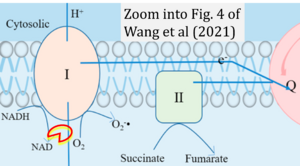Wang 2021 Food Bioscience
| Wang Peixin, Wang D, Hu J, Tan BK, Zhang Y, Lin S (2021) Natural bioactive peptides to beat exercise-induced fatigue: A review. Food Bioscience 43:101298. https://doi.org/10.1016/j.fbio.2021.101298. |
Wang Peixin, Wang Dehua, Hu Jiamiao, Tan Bee K, Zhang Yi, Lin Shaoling (2021) Food Bioscience
Abstract: Exercise-induced fatigue is charactered by the feeling of tiredness and a decrease in muscle performance resulting from intense and prolonged exercise. With the development of modern society, exercise-induced fatigue has become a widespread problem besetting people's daily life. Over the years, increasing attention has been paid to the study of anti-fatigue peptides. Several animal models have been developed to mimic exercise-induced fatigue, which could be employed to measure the activities of anti-fatigue peptides isolated from a wide range of sources. A number of natural bioactive peptides were identified with ability to prevent and alleviate exercise-induced fatigue via various complex biological reactions, with possible molecular mechanisms being also explored extensively. In this review, we summarize the major research findings on anti-fatigue peptides, including the isolation and preparation of anti-fatigue peptides, the widely adopted methods for evaluation of anti-fatigue activities, and possible anti-fatigue mechanisms. Current evidence strongly supports that anti-fatigue peptides may relieve exercise-induced fatigue via multiple mechanisms, including participation and regulation of energy metabolism; inhibition of inflammatory responses; reduction of reactive oxygen species content; and regulation of neurotransmitters, etc. In conclusion, the review provides key research perspectives to inform further research on anti-fatigue peptides for the food industry.
• Bioblast editor: Gnaiger E
Hydrogen ion ambiguities in the electron transfer system
Communicated by Gnaiger E (2023-10-08) last update 2023-11-10
- Electron (e-) transfer linked to hydrogen ion (hydron; H+) transfer is a fundamental concept in the field of bioenergetics, critical for understanding redox-coupled energy transformations.
- However, the current literature contains inconsistencies regarding H+ formation on the negative side of bioenergetic membranes, such as the matrix side of the mitochondrial inner membrane, when NADH is oxidized during oxidative phosphorylation (OXPHOS). Ambiguities arise when examining the oxidation of NADH by respiratory Complex I or succinate by Complex II.
- Oxidation of NADH or succinate involves a two-electron transfer of 2{H++e-} to FMN or FAD, respectively. Figures indicating a single electron e- transferred from NADH or succinate lack accuracy.
- The oxidized NAD+ is distinguished from NAD indicating nicotinamide adenine dinucleotide independent of oxidation state.
- NADH + H+ → NAD+ +2{H++e-} is the oxidation half-reaction in this H+-linked electron transfer represented as 2{H++e-} (Gnaiger 2023). Putative H+ formation shown as NADH → NAD+ + H+ conflicts with chemiosmotic coupling stoichiometries between H+ translocation across the coupling membrane and electron transfer to oxygen. Ensuring clarity in this complex field is imperative to tackle the apparent ambiguity crisis and prevent confusion, particularly in light of the increasing number of interdisciplinary publications on bioenergetics concerning diagnostic and clinical applications of OXPHOS analysis.
Labels: MiParea: Exercise physiology;nutrition;life style, Pharmacology;toxicology



